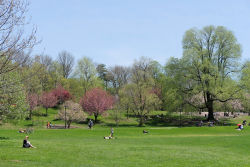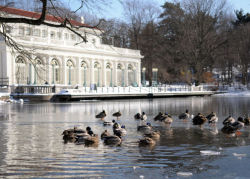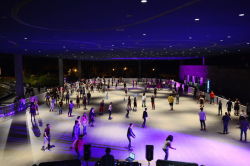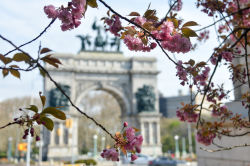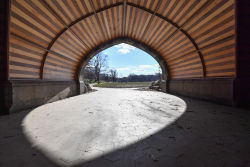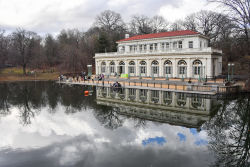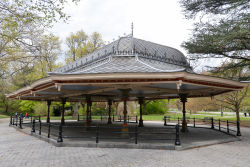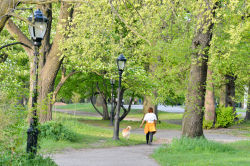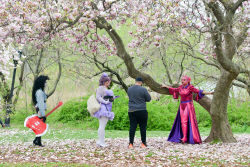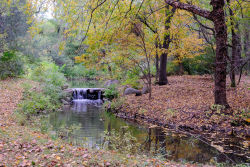Prospect Park
View all monuments in NYC Parks, as well as temporary public art installations on our NYC Public Art Map and Guide.
Von Weber Memorial
| Artist: | Chester Beach |
| Dedicated: | 1909 |
| Location: | Flower Garden |
Artwork History
The original plan of Prospect Park, designed by Frederick Law Olmsted and Calvert Vaux in 1866, left blank this area of the park, except for the written labels "Concourse for Pedestrians" and "Music Stand." With the park under construction around 1870, Olmsted and Vaux elaborated their design to accommodate musical performances. Within an otherwise pastoral park, they set formal grounds with terraces and a radial arrangement of walkways, punctuated by lineally arranged trees, lavish floral beds and elaborate decorative carvings in New Brunswick sandstone. Noting that, "Promenade concerts are common in many European pleasure grounds [and were] universal in German towns, common in French, and less so in British," they sought in the concert grove to achieve a place with this purpose in mind.
At the north end was built the Concert Grove House, demolished in 1949, and at the south end Vaux designed the Concert Grove Pavilion, completed in 1874. Made of eight cast-iron posts modeled after Hindu columns of the medieval period (8th to 12th centuries), and supporting an elaborately painted hipped roof with stained-glass cupola, the structure--restored in 1987--is also known as the Oriental Pavilion. At one time it was used as an open-air restaurant.
In 1887 the Music Pagoda was built near the Lily Pond, and with the subsequent establishment of a new music grove at the north edge of the area of the park known as the Nethermead, this area came to be referred to as the Flower Garden.
The Concert Grove possesses a rich collection of bronze sculptural portraits. Three were donated by United German Singers of Brooklyn as trophies which they had won in the national Saengerfest choral competitions. These works include Henry Baerer’s bust of Ludwig von Beethoven (1894), Augustus Mueller’s Wolfgang Amadeus Mozart (1897), and Chester Beach’s Karl Maria Von Weber (1909).
The other statues in the vicinity are John G. Draddy’s portrayal of Irish poet Thomas Moore (1879), J. Wilson McDonald’s representation of American author Washington Irving (1871), Henry Kirke-Brown’s Abraham Lincoln (1869), and Sigvald Asbjorsen’s homage to composer Edward Grieg (1914), a gift of the Norwegian Societies of Brooklyn. A 1997 grant from the Florence Gould Foundation funded the conservation of the Concert Grove statuary.
Artwork Details
| Description: | Bust on pedestal |
| Materials: | Bronze, Barre granite |
| Dimensions: | Bust H: 4'1 ½" |
| Donor: | United German Singers |
| Cast: | ca 1909 |
Please note, the NAME field includes a primary designation as well as alternate namingsoften in common or popular usage. The DEDICATED field refers to the most recent dedication, most often, butnot necessarily the original dedication date. If the monument did not have a formal dedication, the yearlisted reflects the date of installation.
For more information, please contact Art & Antiquities at (212) 360-8163.
Check out your park's Vital Signs
Clean & Safe
Green & Resilient
Empowered & Engaged Users
Share your feedback or learn more about how this park is part of a
Vital Park System



